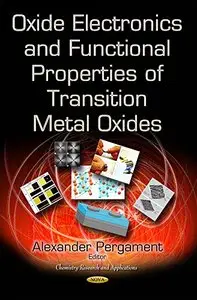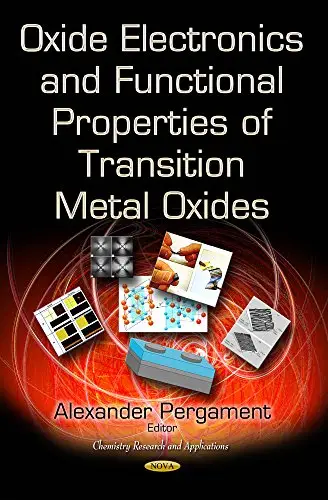Alexander Pergament, "Oxide Electronics and Functional Properties of Transition Metal Oxides"
English | ISBN: 1633214990 | 2014 | 242 pages | PDF | 9 MB
English | ISBN: 1633214990 | 2014 | 242 pages | PDF | 9 MB
MOSFETs (Metal-Oxide-Semiconductor Field-Effect Transistors) for a long time have been the workhorse of the modern electronics industry. For the purpose of a permanent integration enhancement, the size of a MOSFET has been decreasing exponentially for decades in compliance with Moore’s Law, but nowadays, owing to the intrinsic restrictions, the further scaling of MOSFET devices either encounters fundamental (e.g. quantum-mechanical) limits or demands for more and more sophisticated and expensive engineering solutions. Alternative approaches and device concepts are being currently designed both in order to sustain an increase of the integration degree, and to improve the functionality and performance of electronic devices. Oxide electronics is one such promising approach which could enable and accelerate the development of information and computing technology. The behavior of d-electrons in transition metal oxides (TMOs) is responsible for the unique properties of these materials, causing strong electron-electron correlations, which play an important role in the mechanism of metal-insulator transition. The Mott transition in vanadium dioxide is specifically the effect that researchers consider as one of the most promising phenomena for oxide electronics, particularly in its special direction known as a Mott-transition field-effect transistor (MTFET). Therefore, VO2-based MTFET is one of the fields of oxide electronics. Also, oxide ReRAM is another rapidly growing field of oxide electronics. Finally, many other functional properties of TMOs, including for example, optical and electrical switching of thermochromic VO2 smart coatings, optical properties (especially Raman spectra) of single crystalline lithium niobate and tantalate (LiNbO3 and LiTaO3), as well as optical properties (near band gap optical absorption) of TMO-based nanolaminates, like e.g. ZrO2-Al2O3, HfO2-Al2O3, TiO2-Al2O3, ZrO2-TiO2, and HfO2-TiO2, are extremely important to understand and estimate the potential ability of different TMOs and TMO-based structures in diverse fields of oxide electronics.



